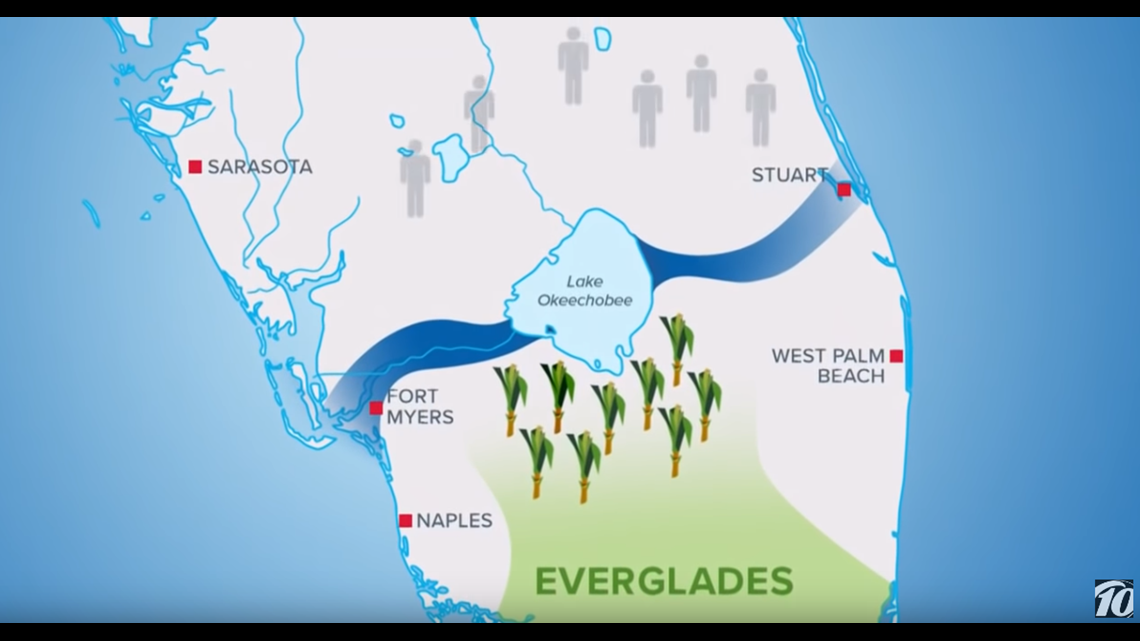You’ve been hearing a lot about toxic algae wreaking havoc in Florida’s waters. People are having trouble breathing, marine life is dying and the economy is suffering.
And what’s causing it is a combination of naturally occurring conditions and human activity. Red tide occurs naturally. There’s evidence that it was around 500 years ago. But in the last 50 years it has gotten worse and we humans have a lot to do with it.
Dr. Larry Brand, professor of Marine Biology and Ecology at the University of Miami has been studying the issue.
RED TIDE COVERAGE: Everything you need to know about red tide in Florida
“What obviously has increased to a great extent over the last 50 years, is the number of humans in Florida and all the associated activities like agriculture, etc,” Dr. Brand said.
So, how did we get here? To answer that we have to go back 100 years when humans altered the natural flow of water.
For 6,000 years, water flowed from Lake Okeechobee through the Everglades and into the Florida Bay. And then, sugar cane fields arrived. To make space for the farmland, Florida started diverting excess water from the lake to the east and west coasts.
As more people moved to the area, the water from Lake Okeechobee changed.
Runoff from farms north of the lake, lawn fertilizer and people’s septic tanks polluted the Lake. And now, that water feeds the toxic algae, creating an ecological disaster for Floridians.
When people point the finger at Big Sugar, they respond by saying they are not responsible for most of the nutrients in the lake, and that’s true. A 2011 government report traced only 10 percent of the phosphorous in Lake Okeechobee back to sugar farms.


But what some environmentalists want is for Big Sugar to give the land back to the state of Florida so that the water can flow the way it’s supposed to, and get naturally filtered through the Everglades.
“Wetlands are very good at taking up those nutrients, so you have nice clean water released out of the wetlands. The problem is now the northern third of the Everglades has been drained and turned into these sugar cane fields,” Dr. Brand said. “That’s what forces engineers to release the water to the east and the west.”
And there have already been several attempts to change this. In 2008, then-governor Charlie Christ signed a deal to buy the land back from the sugar industry.
In 2014 Floridians approved a tax to come up with the money to buy the land.
But all that fell through.
Meanwhile, in the last 20 years, the sugar industry has donated tens of millions of dollars to Florida politicians.
But they say they’re also putting money toward cleanup and that they support solutions like the Comprehensive Everglades Restoration Plan. But it has been 18 years since that project was launched and red tide is still a major problem for Floridians.
►Make it easy to keep up-to-date with more stories like this. Download the 10 News app now.
Have a news tip? Email tips@wtsp.com, visit our Facebook page or Twitter feed.



